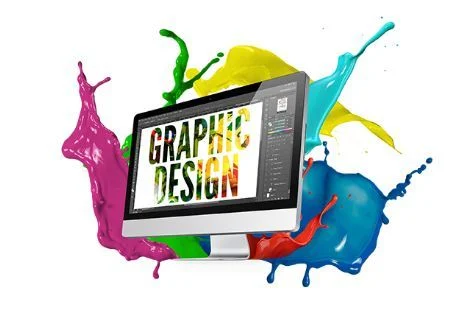Table of Contents
Fusion aesthetics in graphic design combine different artistic styles and philosophies to create visually stimulating and unique designs. Mastery of this craft requires understanding both practical techniques and underlying theories.
• The Foundation of Graphic Design
Graphic design starts with understanding the basics. This includes knowing color theories, typography, and layout principles. Colors can evoke emotions and set moods. For example, red can signify passion or urgency, while blue often feels calming and trustworthy. Typography involves choosing fonts that fit the message you want to convey. Serif fonts, like Times New Roman, often seem formal and traditional. Sans-serif fonts, like Arial, feel modern and clean. Layout principles, such as alignment and spacing, ensure that your design is organized and easy to read. Mastering these basics is essential for any designer.
• The Role of Technology in Graphic Design
Modern graphic design relies heavily on technology. Software tools like Adobe Photoshop, Illustrator, and InDesign have become industry standards. These tools allow designers to create complex and detailed designs with relative ease. Photoshop is used for photo editing, Illustrator for vector graphics, and InDesign for layout and print designs. Being proficient in these tools can greatly enhance your workflow and creativity. Moreover, understanding web design software like Adobe XD and Figma can also be beneficial. These tools help in creating interactive designs for websites and apps, proving essential in today’s digital era.
• The Inspiration Behind Fusion Aesthetics
Fusion aesthetics draw inspiration from different art forms, cultures, and periods. This blend creates designs that are both unique and captivating. For example, a design might combine the bold colors and shapes of pop art with the elegant simplicity of minimalism. Or it could mix the intricate patterns of traditional Japanese art with the modern feel of Bauhaus design. This fusion not only makes designs stand out but also allows them to tell richer stories. Finding inspiration often involves looking beyond the digital world and exploring nature, literature, and even everyday life.
• The Importance of Audience Understanding
A key component of successful graphic design is understanding your audience. Knowing who will be interacting with your design can influence everything from color choices to typography. For instance, a design aimed at children will likely use bright colors and playful fonts. In contrast, a corporate audience might prefer more subdued colors and professional typography. Conducting surveys and focus groups can provide valuable insights into your audience’s preferences. Audience understanding ensures that your design not only looks good but also effectively communicates your message.
• Balancing Aesthetics and Functionality
Aesthetics and Functionality
In graphic design, aesthetics should never come at the expense of functionality. A well-designed piece needs to be both beautiful and practical. This is particularly important in interface design, where users need to navigate smoothly. Designers must ensure that buttons are easily clickable, text is readable, and the layout is intuitive. Even in print design, functionality matters. For example, a brochure should be easy to fold and navigate. Balancing aesthetics and functionality requires a keen eye and constant testing. This balance enhances user experience and makes designs more effective.
• The Theoretical Framework of Graphic Design
Theory plays a crucial role in graphic design. Understanding theories like Gestalt principles can improve your designs. Gestalt principles explain how people perceive visual elements as a whole rather than just individual parts. Elements that are close together are seen as related. Similar colors, shapes, or sizes are grouped. Even simple principles like balance, contrast, and hierarchy have deep theoretical foundations. For example, contrast involves using different elements to highlight differences. This can draw attention to a focal point. Knowing these theories allows designers to create more effective and visually appealing designs.
• Evolving Trends in Fusion Aesthetics
Graphic design is always evolving, with new trends emerging regularly. In fusion aesthetics, this evolution is even more dynamic. Trends like eco-friendly designs, virtual reality interfaces, and retro-futurism are making their mark. Eco-friendly design focuses on using sustainable materials and promoting environmental consciousness. Virtual reality offers immersive design experiences, turning users into active participants. Retro-futurism blends nostalgic elements with futuristic themes, creating a unique aesthetic. Staying updated with these trends allows designers to keep their work fresh and relevant. Embracing new trends also opens up new creative possibilities.
• Conclusion
Mastering the craft and theory of graphic design, particularly in the realm of fusion aesthetics, is a rewarding journey. It requires a solid foundation in basic principles like color theory, typography, and layout. Proficiency in modern technology and software tools is essential for creating complex designs. Drawing inspiration from various cultures and art forms enriches your work. Understanding your audience ensures that your designs are effective and engaging. Balancing aesthetics with functionality improves user experience. A deep understanding of theoretical frameworks can enhance your design choices. Staying updated with evolving trends keeps your work fresh and innovative. By integrating these elements, you can create visually stunning and impactful designs that resonate with diverse audiences.
